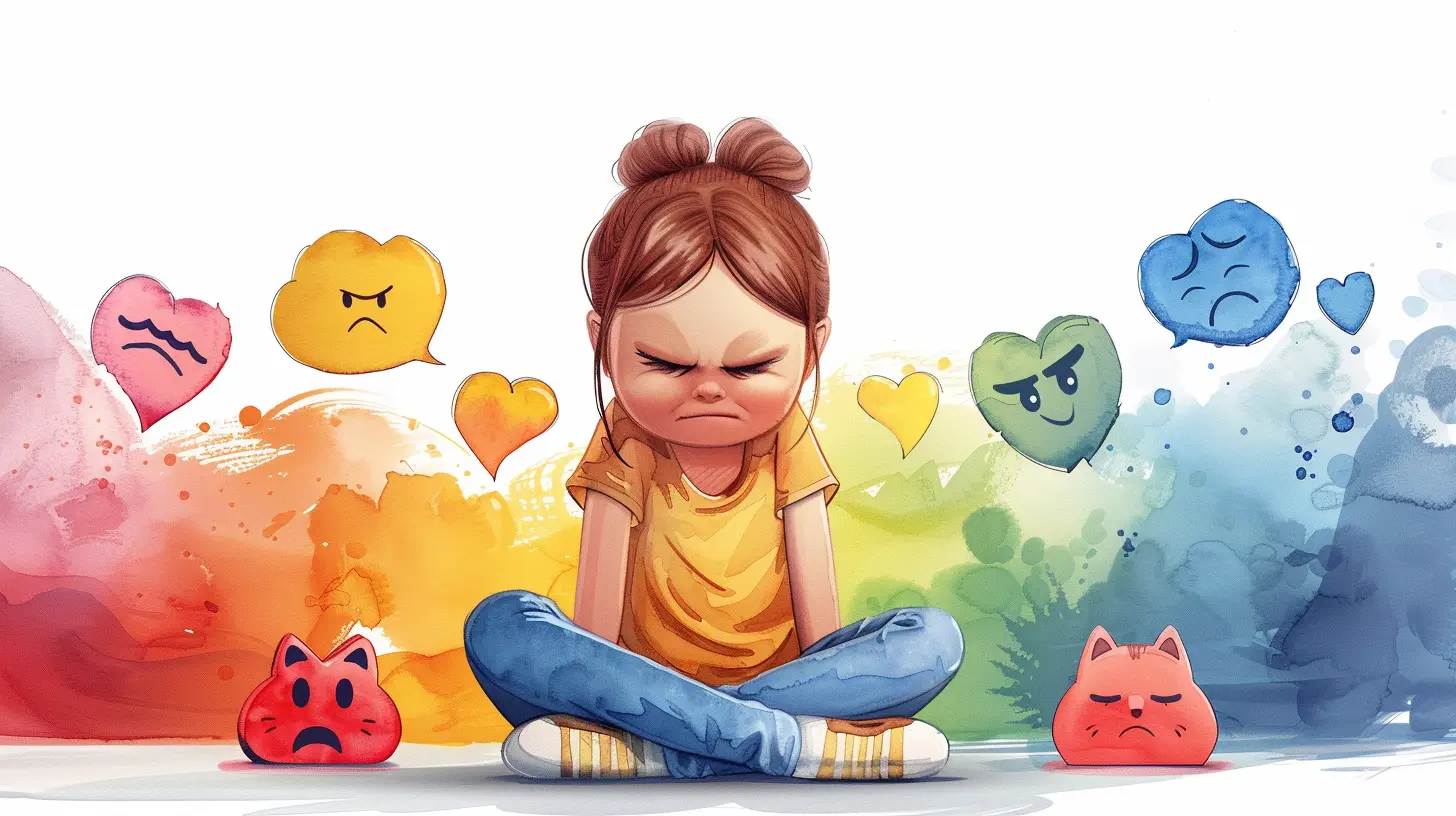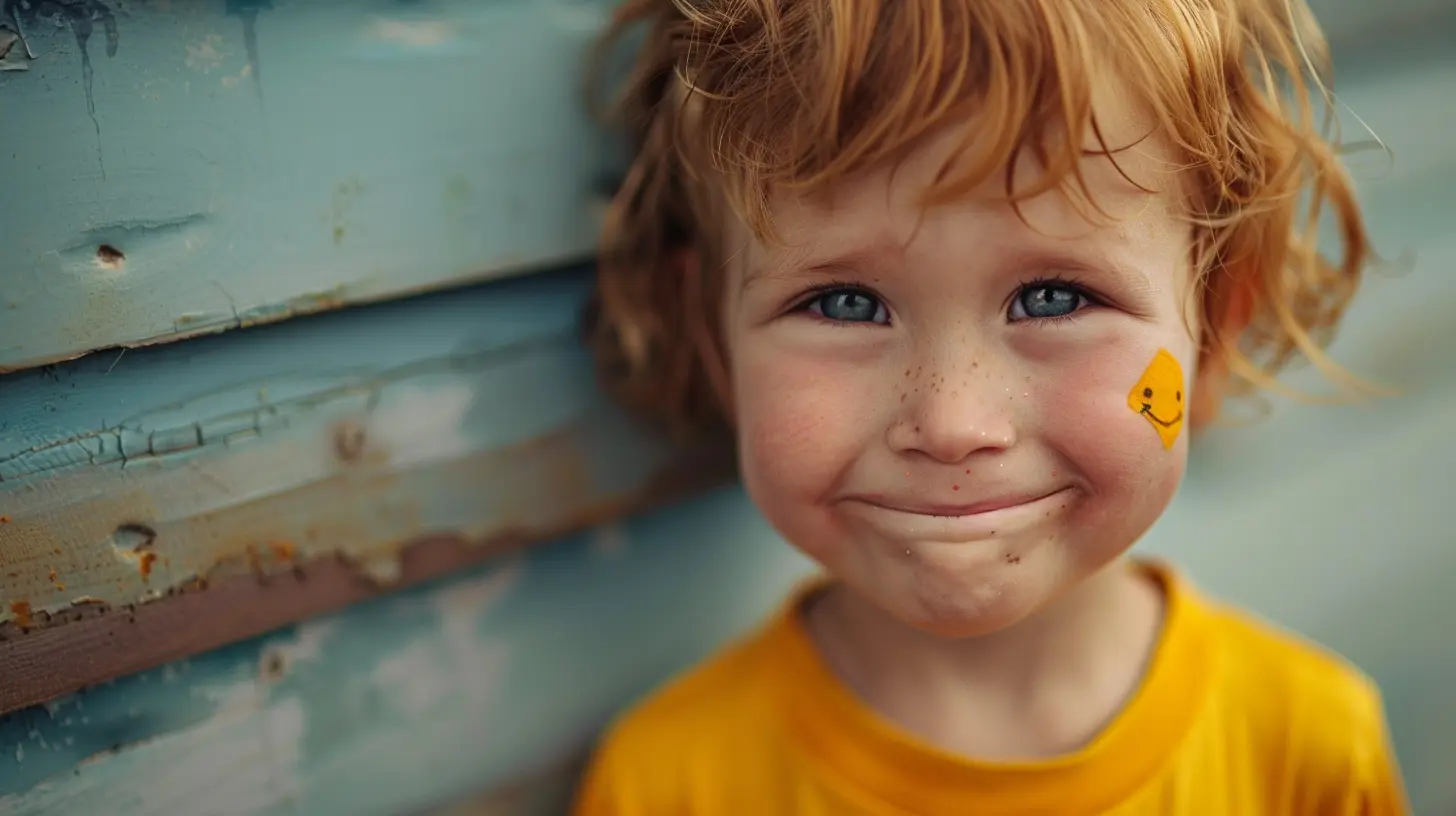1 November 2025
Let’s face it—life doesn’t always play fair, even when you’re five years old. One minute everything’s going great with crayons and cookies, and the next? Someone took your favorite toy or said something unkind. For little ones navigating the big world around them, emotional rollercoasters are part of the ride.
That’s where emotional resilience comes in.

What Is Emotional Resilience?
Emotional resilience is the ability to bounce back after facing stress, disappointment, or failure. Think of it as having an emotional "shock absorber"—the stronger that cushion, the smoother the ride through life’s bumps.For children, especially early learners, building this kind of strength is crucial. You wouldn’t send a toddler out into a snowstorm without a jacket. So why send them into life without the tools to handle emotional storms?
But here's the thing—kids aren’t born with emotional resilience. It’s something they learn, just like walking, reading, or riding a bike.

Why It Matters in Early Childhood
Have you ever watched a kindergartner lose their mind over a bent crayon? It's not just dramatic flair—it’s a real inability to process stress. When children don’t have coping strategies, even small frustrations turn into full-blown meltdowns.More importantly, emotional resilience is deeply tied to mental health. Kids who learn to handle their feelings early on are better equipped to manage anxiety, conflict, and pressure as they grow. They’re also more likely to develop empathy, confidence, and independence. Big wins, right?
And here's a bonus: Resilient kids are also better learners. When emotional turmoil doesn’t cloud their thoughts, their brains are free to absorb and explore.

Building Blocks of Emotional Resilience
Let’s break it down—what exactly helps kids develop that emotional superpower?1. Strong Relationships
You know that feeling when someone just “gets you”? Kids need that too. Secure relationships with caregivers, teachers, and peers are foundational. When children feel safe and understood, they become braver and more adaptable.Picture emotional resilience as a ladder—trust is the first rung.
2. Emotional Literacy
Before little ones can manage their emotions, they need to name them. That’s where emotional literacy comes in. Words like “frustrated,” “nervous,” “disappointed,” or “excited” give color and shape to feelings that might otherwise feel overwhelming.Think of it as giving kids a feelings dictionary—and trust me, it changes everything.
3. Coping Strategies
Once kids can identify what they're feeling, they need tools to deal with those emotions. These can be as simple as deep breathing, drawing a picture, taking a break, or asking for help.Teaching coping skills is like packing them a backpack for life—making sure they have what they need when things get heavy.

How Can Educators and Parents Help?
Here’s where the rubber meets the road. Whether you're a parent, teacher, or caregiver, there’s a lot you can do to help little learners toughen up emotionally—without toughening their hearts.Let’s break it into bite-sized chunks.
1. Model It
Kids are like emotional mirrors—they reflect what they see. If you fly off the handle when you’re stressed, they probably will too. But if they watch you pause, breathe, and handle things calmly, they learn, “Oh, that’s how you do it.”Be honest about your own feelings. Say things like, “I’m feeling frustrated right now, but I’m going to take a deep breath.” It teaches them that even grownups have tough moments—and can work through them.
2. Create a Safe Space for Feelings
No one likes to be told, “Don’t cry,” or “You’re fine,” especially when they’re clearly not fine. Instead, validate their emotions. Try, “You look upset. Want to talk about it?” or even just, “It’s okay to feel sad sometimes.”By making emotions safe to express, you’re giving kids the green light to feel—and heal.
3. Make Feelings a Daily Conversation
Don’t wait for a meltdown to talk about emotions. Check in during snack time or circle time: “What made you smile today?” or “Did anything bug you?” Create a routine around sharing feelings, and it’ll feel as normal as storytime.You can even use storybooks, puppets, or drawings to get the ball rolling.
4. Teach Easy-to-Use Coping Tools
Coping doesn’t need to be complicated. Here are a few kid-friendly strategies:- Breathing Exercises: Try “smell the flower, blow out the candle.”
- Calm Corner: A cozy spot with soft pillows, books, or calming toys.
- Feelings Chart: Visual aids to label emotions.
- Worry Boxes: A small box where kids can "post" their worries.
- Movement: Jumping, dancing, or stretching to release tension.
Whatever strategy you use, be consistent. The more familiar it is, the better it works.
5. Praise Effort, Not Just Outcomes
When a child handles a tough moment well, celebrate it! Say something like, “You were so calm even when you were upset—that took a lot of strength.” This shows them that emotional courage is worth just as much as academic success.6. Encourage Problem Solving
Instead of solving problems for them, guide kids to think through solutions. Ask things like, “What could we do next time?” or “How do you think we can fix this?”It empowers them to take control, which builds confidence—and confidence feeds resilience.
Common Challenges and How to Handle Them
Let’s be real—this isn’t always smooth sailing. Emotions are messy, and every child is different. But here are a few typical speed bumps and how to ride over them.Challenge #1: The Child Who Shuts Down
Some kids go silent instead of blowing up. They retreat, hide, or just freeze.✅ What to do: Gently invite them to share without pressure. Use activities like drawing or storytelling to help them open up.
Challenge #2: The Over-Reactor
You know the one—dramatic displays for even tiny upsets.✅ What to do: Stay calm and predictable. Introduce calming routines and don’t feed into the drama. Offer tools, not lectures.
Challenge #3: The “Tough Guy”
Kids who mask emotions with bravado or aggression.✅ What to do: Teach that showing feelings is a strength, not a weakness. Model vulnerability and offer positive outlets like sports or journaling.
Role of Schools and Educators
Imagine if emotional skills were treated like reading and math. That’s the dream—and it’s very possible.Schools can:
- Integrate SEL (Social and Emotional Learning) into the curriculum.
- Train teachers in trauma-informed practices.
- Offer wellness activities like yoga, art, or music.
- Create school-wide language around feelings and coping.
When emotional well-being is built into the school culture, kids feel it—and it changes everything.
Emotional Resilience and Long-Term Success
Here’s the kicker: kids who learn resilience early on are better set up for life—not just emotionally, but socially, academically, and professionally.They handle peer pressure better. They bounce back from failure quicker. They try harder, even when things get tough. And they’re more likely to become compassionate, grounded, and self-aware adults.
Basically, resilience is the superpower that keeps on giving.
Final Thoughts: Start Small, Think Big
Emotional resilience isn’t built in a day. It’s woven moment by moment, through every meltdown, every soothing hug, every “let’s try that again.”So if you’re a parent or teacher wondering where to begin, remember: start small. Acknowledge a feeling. Offer a breathing tool. Share your own emotions. Bit by bit, you’re building something powerful.
Because here’s the truth—kids are incredibly capable. With the right guidance and support, they can become the strongest, kindest, most emotionally savvy versions of themselves.
And really, what more could we hope for?








Davina Love
This article beautifully highlights the importance of nurturing emotional resilience in young learners. By teaching coping skills early, we empower children to navigate challenges with confidence. Thank you for sharing such valuable insights on fostering emotional well-being in education!
December 10, 2025 at 10:09 PM